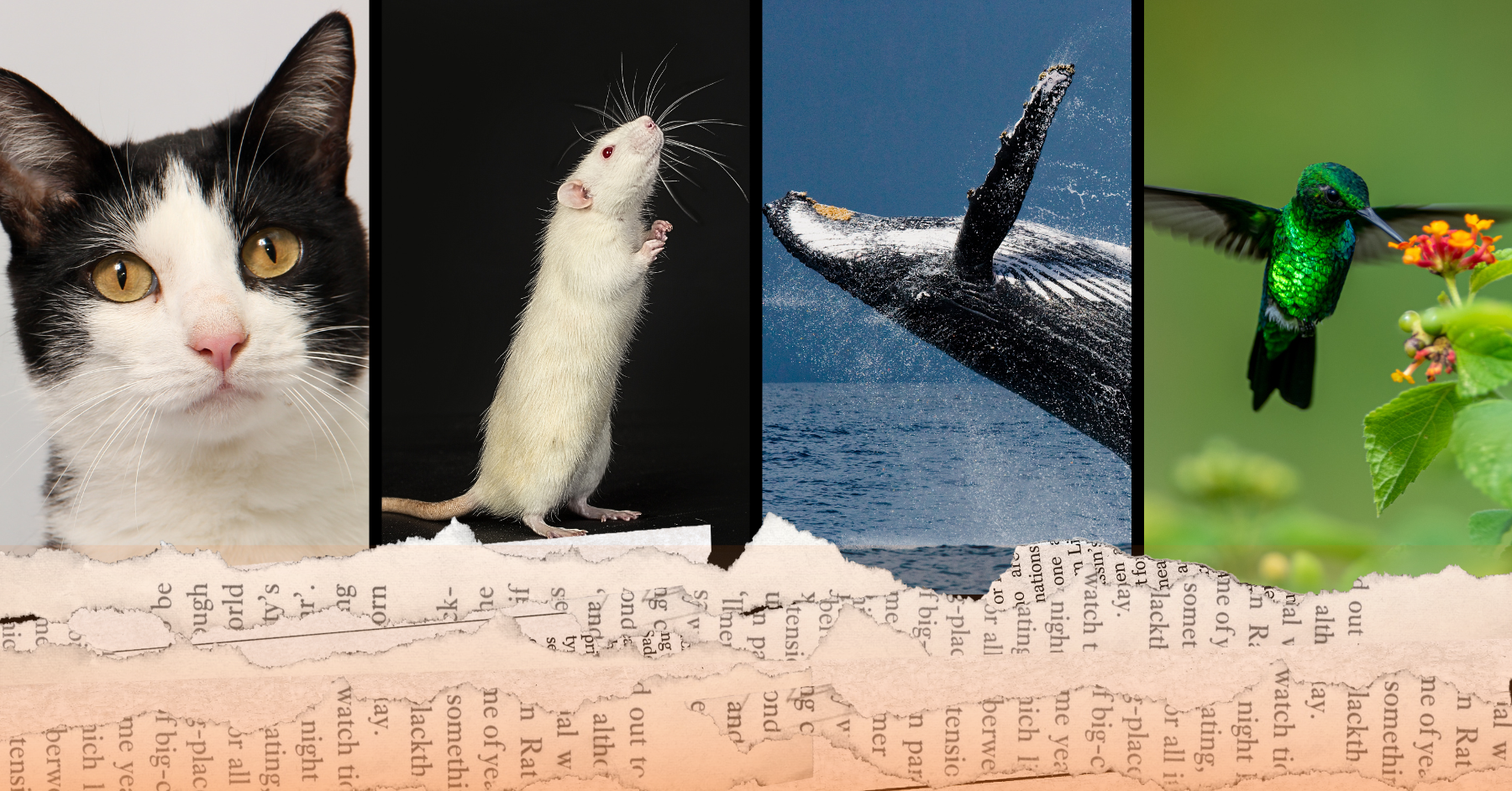
Here’s a roundup of this week’s biggest news stories related to animal research—all the recent media coverage you need to know right now to be the most effective activist for animals in labs.
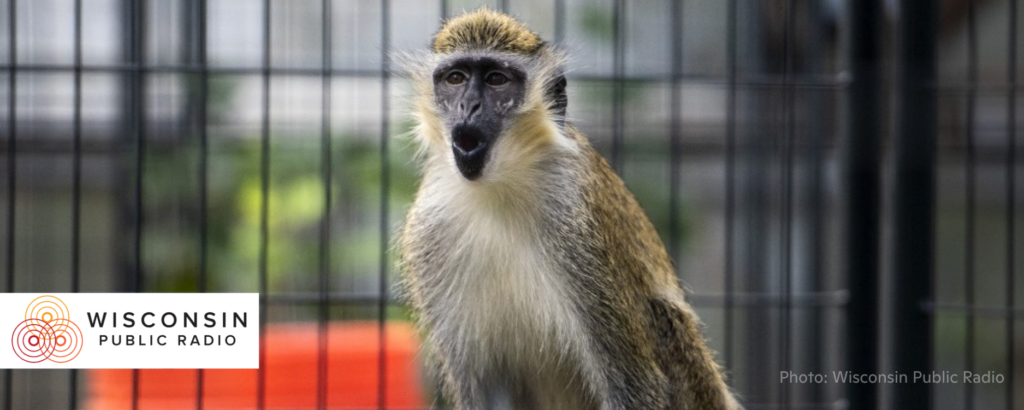
Monkey Business: Wisconsin Primate Sanctuary Running Out of Space
Mackenzie Krumme, 8/15/2024
“Primates Incorporated is one of about 10 accredited primate sanctuaries in the country. The Wisconsin nonprofit houses 12 monkeys, some from research labs . . . But the sanctuary is out of space.”
“In a new fundraising effort, Primates Incorporated hopes to raise $600,000 to build more monkey housing, a medical building and a community kitchen. This effort would triple the current amount of space they have, allowing the group to add 30 more monkeys.”
“Currently, there is no federal funding for nonlethal research monkeys to retire into a sanctuary . . . ‘It costs $15,000 a month to care for just these 12 monkeys,’ . . . ‘We really would like to see that federal funding component. I feel, personally, it should be part of the cost of doing research.’” 📰 Full Story →

Cats Seem to Grieve the Deaths of Companion Pets, Study Finds
Matthew Rozsa, 8/18/2024
“Cat intelligence is an ongoing area of research, with new discoveries being made all the time. Such as when cats make certain facial expressions, they do so to communicate complicated emotions. Scientists believe cats can feel shame, love and other sophisticated emotions. There are even some cats [who] can be trained to ‘talk’ to humans using buttons that produce specific English words. Now a recent study in the journal of Applied Animal Behaviour Science reveals that cats may be deep enough to display grief when they lose a beloved animal companion.”
“ . . . the surviving cats displayed ‘grief-like behaviors’ such as seeking attention and losing interest in eating, playing and sleeping.” 📰 Full Story →
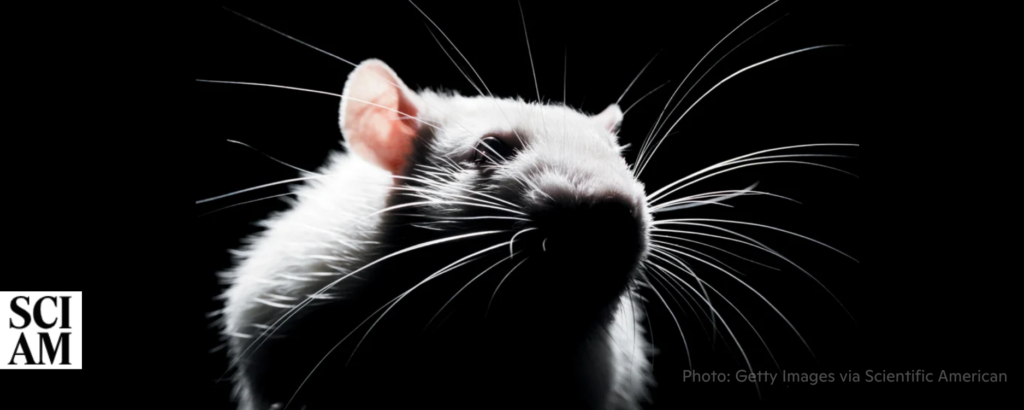
The End of the Lab Rat?
Rachel Nuwer, 8/20/2024
“Around 90% of novel drugs that work in animal models fail in human clinical trials–an attrition rate that contributes to a $2.3-billion average price tag for every new drug that comes to market.”
“‘The thing you run into with animals—and there’s no way to get around this—is that animal biology is just too different from human biology.’”
“Increasing so-called predictive capability [using non-animal, human-relevant methods] saves time, money and animal lives, according to a 2022 case study by Moderna. The pharmaceutical company used Emulate’s liver chips to screen 35 drug-delivery molecule candidates. The liver chips allowed it to complete that task in a year and a half at a cost of $325,000. If the company had performed the same tests in nonhuman primates, Moderna says, it would have cost more than $5 million and taken five years.” 📰 Full Story →

Humpbacks Are Among Animals Who Manufacture and Wield Tools
University of Hawaii at Manoa, 8/20/2024
“In a study published today in Royal Society Open Science, researchers . . . consider a new designation of the humpback whales they study: tool wielders.”
“Researchers have known that humpback whales create ‘bubble-nets’ to hunt, but they have learned that the animals don’t just create the bubble-nets; they manipulate this unique tool in a variety of ways to maximize their food intake . . . These whales skillfully blow bubbles in patterns that form nets with internal rings, actively controlling details like the number of rings, the size and depth of the net, and the spacing between bubbles.”
“‘This impressive behavior places humpback whales among the rare group of animals that both make and use their own tools for hunting.’” 📰 Full Story →
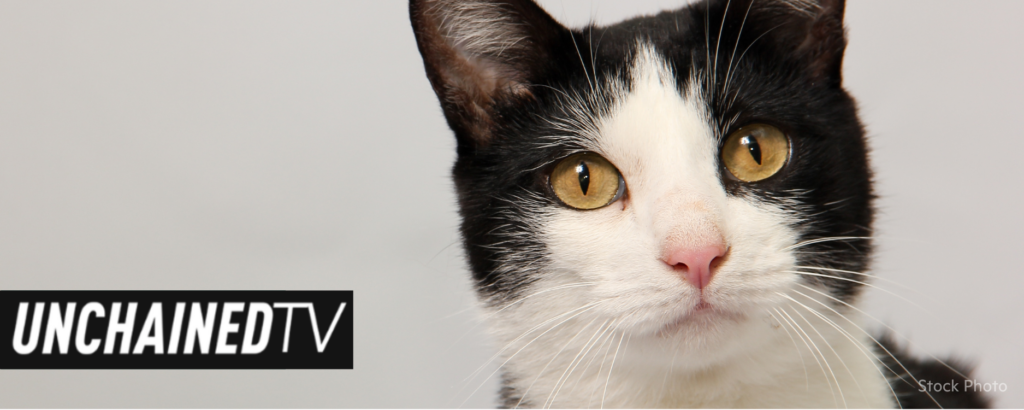
Meet the Cat Who Escaped a US Gov Torture Lab
UnchainedTV, 8/22/2024
“ . . . meet Delilah, a cat who survived hellish, taxpayer-funded experiments at a USDA lab.”
“She [] was a breeder. She was used as an incubator for the kittens in that lab. 22 of her kittens were killed; they were slaughtered, and they were burned. And, thousands and thousands of others suffered the same fate.”
“The US government . . . wastes . . . $20 billion a year on animal testing. That’s more than the entire private sector combined . . . The government is the . . . market maker.” 📰 Full Story →
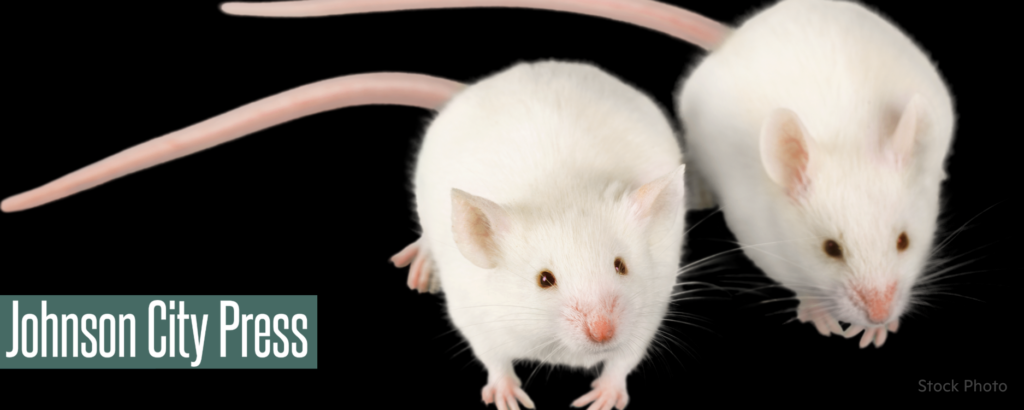
ETSU Lab Staff Suspended for Animal Misconduct, Report Reveals
Laken Greene, 8/21/2024
“A national research watchdog is calling for more punitive action after obtaining an unpublished report indicating that misconduct occurred with lab animals on campus at ETSU. ETSU officials reported Monday, however, that because a federal animal welfare agency was satisfied with their handling of the situation upon its review, they are taking no additional punitive action at this time.”
“The report stated that on May 3, lab staff failed to euthanize two moribound mice who had undergone mammary fat pad surgery. When reviewing the surgical process . . . it was determined that the Avertin solution used for anesthesia had been made in February. ‘It is suspected that is what led to these animals’ demise due to the toxic compounds produced during breakdown due to aging,’ the report stated.”
“Further investigation revealed that the personnel who had performed surgery on the mice had failed to monitor the animals post-operatively, discontinued observation and went home before the mice had fully recovered.” 📰 Full Story →

Species Spotlight: Hummingbirds
Rise for Animals, 8/22/2024
Hummingbirds are tiny, vibrant marvels of nature, and, for many of us humans, catching glimpses of them is a highlight of spring and summer! Yet, despite our admiration, we often don’t know many of the characteristics that make them truly astonishing – and we should! 📰 Full Story →
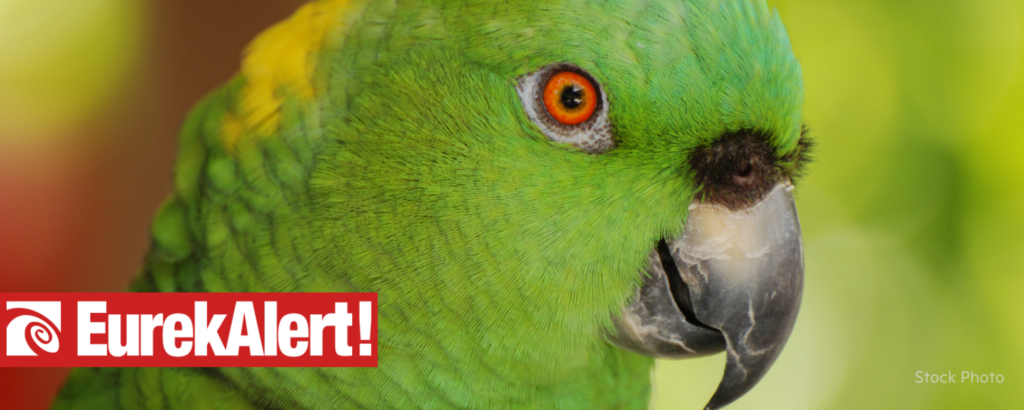
Birds Have Accents, Too: Researchers Find Cultural Change in the Dialects of Parrots Over 22-Year Period
University of Pittsburgh, 8/21/2024
“While distinct languages and dialects are common to human societies, most people are aware that other species may similarly have culturally significant dialects.”
“Yellow-naped amazons are large parrots that form long-term pair bonds, roost in large flocks at night, and forage in smaller groups during the day. They use a variety of calls that they learn from each other, of which contact calls are the most common. It is these calls that show the distinct geographic differences characteristic of dialects.” 📰 Full Story →